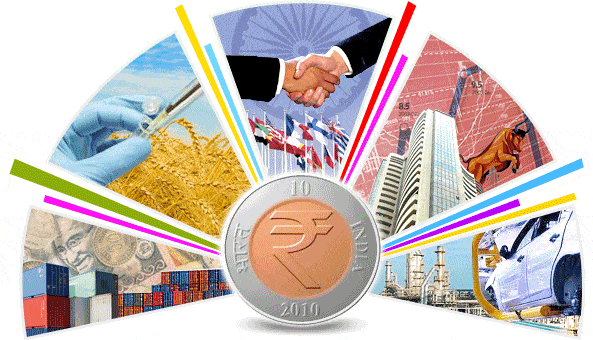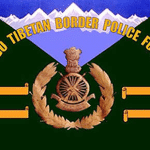In News: The Union Cabinet chaired by the Prime Minister recently approved the implementation of the recommendations of the 7th Central Pay Commission (CPC) on pay and pensionary benefits.
What is a CPC?
- A CPC is set up by the Government of India at irregular intervals to review the salary structure of its employees and recommend changes to the same. It has the mandate to recommend changes in the salary structure of both the civil employees and military officers within a period of 18 months from the date of its constitution.
- A total of 7 CPCs have been constituted so far since independence.
- The 1st CPC was formed in the year 1946, headed by Srinivasa Varadachariar.
- The 6th CPC was formed in the year 2006, headed by Justice B.N. Srikrishna.
- The latest one was constituted in 2014, chaired by Justice Ashok Kumar Mathur.
- Salaries and pensions are a part of the Non-Plan expenditure of the government
Recommendations of the 7th CPC- It had recommended:
- a near 15 percent hike in the basic pay of the central government employees, a 23.55 percent overall hike in salaries, allowances and pensions.
- entry level pay to be raised to Rs. 18,000 per month from Rs.7,000 at present (based on Dr. Aykroyd formula)
- the maximum pay which is drawn by the Cabinet Secretary to be increased to Rs. 2.5 lakh per month from Rs. 90,000 at present.
- an annual increment of 3 percent.
- The salaries of Chairmen of select regulatory bodies to be Rs.4.5 lakh and that of other members to be Rs.4 lakh.
- an Index of Rationalisation to arrive at the minimum pay in each level of the Pay Matrix depending upon the increasing role, responsibility and accountability at each step in the hierarchy.
- abolition of 51 allowances and 37 allowances to be subsumed.
- a fitment factor of 2.57 to be applied across all levels in the pay matrices for the purpose of revision of pay and pension. The older salaries will be multiplied by this factor to get the new ones.
- to enhance the ceiling of House Building Advance from the current Rs.7.50 lakh to Rs. 25 lakh. It is an interest bearing advance.
- to abolish all interest free advances given earlier, as the salaries had been increased by a significant amount in the recent years, and these had high administrative costs.
- to raise the gratuity ceiling from Rs.10 lakh to Rs. 20 lakh. The ceiling will increase by 25 percent whenever the dearness allowance rises by 50 percent.
for civil services
- IAS officers get promoted two years earlier than others. The CPC recommends this to be retained but says that all officers like IPS,IFS, IRS etc should be treated at par with the IAS officers after 17 years of services for empanelment for various central government posts.
- IAS and IFS officers get an additional 3 percent increment with promotion. This should be extended to IPS and IFoS as well as they also face risk, hardship and injury.
for defence sevices
- Officers in the Short Service Commission can exit anytime between the 7th and the 10th year of their service.
- There should be a provision of lateral entry of retired defence personnel into Central Armed Police forces (CAPF) to provide them employment post-retirement.
- ‘Martyr status’ should be given to CAPF personnel too so that their families can utilize the benefits accrued to the families of martyrs.
- Increase the risk-hardship allowance for those stationed in Siachen or other difficult terrain.
- Approximately 2 times increase in defence salaries.
- One Rank One Pension Scheme should be implemented for civilian employees as well.
for non-performers
- They should not be given annual increments.
- Bonus Scheme should be replaced by a performance related pay scheme.
- Replace the existing system of Pay Bands and Grade Pay by a system of Pay Matrix.
- A strict Modified Assured Career Progression Scheme (MACP) should be there so that non-performers do not get enough increments and promotions.
Miscellaneous recommendation
- No need to appoint CPC every 10 years but instead annual increments should be given on the basis of Consumer Price Index (CPI) and other factors.
- The process for claiming allowances should be simplified.
Who implements the CPC report?
- The CPC report is implemented by the Department of Expenditure of the Ministry of Finance.
- It will be implemented w.e.f 1st January, 2016 (retrospectively).
Also read: National Missions in India: An Update
Beneficiaries of the 7th CPC?
- All statutory & regulatory bodies excluding RBI.
- All Union Government employees (of both industrial and non-industrial establishments).
- All India Services (IAS, IPS, IFoS).
- Personnel in Union Territories (UT), Supreme Court (SC), Audit & Account Services.
- ∼ 52 lakh pensioners.
What will be the implications of approval of these recommendations?
- This approval will hike the take home salaries of over one crore central government employees and pensioners.
- The hike will financially impact the government as it will have to bear the additional burden of Rs.1.02 lakh crore or 0.65 percent of GDP.
- The arrears of the last 6 months will be cleared in this financial year itself.
- The status of the employee will now be determined by the level in the Pay Matrix instead of the Grade Pay earlier.
- A committee has been formed, to be headed by the Finance Secretary, to examine the recommendation on allowances because of its potential impacts. The report will be submitted in 4 months. Till then all the allowances will continue to be paid at the existing rates.
Positive effects
- This is being done to increase consumer spending to boost economic growth.
- People will be inclined to invest in real estate, in turn reversing the downward trend in the sector.
- The state governments are also expected to follow the footsteps of the central government and implement the pay recommendations.
- There are expectations of a faster growth in the automobile sector, consumer appliances/ durables and retail financing.
Negative effects
- Is it going to have any effect on the efficiency of the officers?
- It will increase government expenditure. The government will have to slash other developmental expenditure to maintain fiscal discipline.
- The increase in salaries is not linked to their performance as is the case in private sector.
- The state governments will follow suit, which will increase the expenditure manifold.
- The majority of the population is still employed in the unorganised sector who remain uncovered by these benefits.
Impact on inflation
- Additional cash in the hands of public can lead to demand-pull inflation ( due to increase in demand and limited supply).
- But Economic Survey says that it will have insignificant impact on inflation as- maximum number of interest bearing advances (like those for buying vehicles) have been removed and only those for building a house or to buy a computer have been retained. This will result in lesser liquidity in the hands of people and hence lesser impact on inflation.
- The abolition of various interest-free advances will also reduce the amount of money in their pockets.
- A total of 52 types of allowances have been abolished.
- Overtime pay has also been abolished.
- The aggregate supply of goods & services will increase because of La Nina effect this year, so there will be good monsoon and increased agricultural production.
- Various government policies like Make in India, Startup India and the continued focus on Ease of Doing Business will also lead to increased production of goods & services.
- People will invest in financial products to save taxes so liquidity will not be very high.
- The premium of Employee Group Insurance Scheme has also been increased – lesser liquidity.
Grievances
- In every other service, the concept of Non-Functional Upgrade exists, whereby even if you don’t get a promotion, the salaries keep on increasing according to what the senior most gets. The military doesn’t have it even though it is in the military that the promotional pyramid is the steepest.
- The new pay matrix, in the case of military, could result in salaries of officers stagnating after they reach the highest level of a given matrix. This would worsen the disparity between military officers and their civilian counterparts.
- The hike in minimum wage is very meager. There is a huge gap between the minimum and the maximum wages.
- The prices of essential commodities considered by the 7th CPC were faulty.
Contents
In News: The Union Cabinet chaired by the Prime Minister recently approved the implementation of the recommendations of the 7th Central Pay Commission (CPC) on pay and pensionary benefits.What is a CPC?Recommendations of the 7th CPC- It had recommended:for civil servicesfor defence sevicesfor non-performersMiscellaneous recommendationWho implements the CPC report?Also read: National Missions in India: An UpdateBeneficiaries of the 7th CPC?What will be the implications of approval of these recommendations?Positive effectsNegative effectsImpact on inflationGrievances











